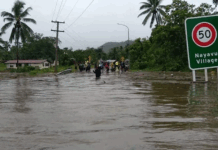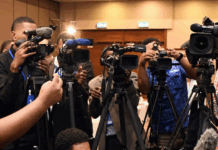
COMMENTARY: By Paul Thompson
The New Zealand government last week unveiled the creation of a new public media entity that will incorporate RNZ and TVNZ. It will pave the way for digital innovation as well as adding new capability and services.
This is a big shift and is a lot to get your head around.
In particular, the public media focus of the new entity is a watershed.
- READ MORE: RNZ and TVNZ to be folded into mega public media entity, says Faafoi
- Merging commercial TVNZ and non-commercial RNZ won’t be easy — and time is running out — Dr Peter Thompson
- Other RNZ and TVNZ merger reports
New Zealand has had various combinations of public and publicly-owned commercial media entities in the past, but this takes the public media remit to a new level.
The new entity is designed to ensure New Zealand has one well-resourced, comprehensive public media entity that can weather the ongoing disruptions caused by the almost unbridled power of the FANGS (Facebook, Apple, Amazon, Netflix and Google).
Over recent years the media sector has been in flux, with commercial models under strain and audiences fragmenting and often favouring the products provided by the FANGS. This has contributed to increased misinformation and polarisation.
The government hopes the new entity will be strong and flexible enough to adapt to those challenges in a way a stand-alone RNZ and TVNZ would not be able to achieve.
Four key building blocks
To understand what the government is trying to do it is useful to focus on four key building blocks it is putting in place.
First, the new public media entity will be exactly that — an organisation that is centred on public media services that inform and connect the nation, celebrate our culture and identity and equip people to participate in our democracy.
Commercial activity will play an important role and will be required to support this public media focus.
Second, the entity will operate under a public media charter that will enshrine in law its editorial independence. The Charter will be the north star for the organisation, requiring it aspire to and deliver the best attributes of public media.
The draft charter that is proposed in the Cabinet paper looks promising. This, more than anything else this, will ultimately determine the direction of the new entity, its tone and culture and the services it provides.
Third, the policy places a strong emphasis on the new entity’s obligation to support and recognise the “Māori Crown relationship”. This is another big change. Indeed, the purpose of the new entity will require it to contribute to a “valued, visible, and flourishing te reo Māori me ngā tikanga Māori”.
This is vital as the new entity, from day one, needs to capture what makes Aotearoa New Zealand unique, including Te Tiriti. The new entity’s board will include at least two members with Te Ao Māori and tikanga Māori expertise.
And fourth, the new entity will be required to collaborate with other media and support the overall health of the wider media system. This recognises the critical importance of sustaining a plurality of media sources and perspectives in the years ahead.
Mediawatch: Can RNZ + TVNZ = new PME in 2023? https://t.co/6HDIgnY3L1
— RNZ News (@rnz_news) March 13, 2022
Trusted media underpin democracy
Trusted, independent news and current affairs underpin our democracy. The only way to ensure trust in the media is to ensure people have a range of sources and perspectives to choose from.
The new entity will need to support that diversity in meaningful ways, for example, by training the next generation of reporters, producers, presenters, and programme makers for the benefit of the wider industry.
Public media institutions around the world have been on the back foot recently.
In many countries publicly-owned and funded broadcasters have been reined-in, leaned on and co-opted to serve political ends.
This is happening to a shocking degree in Hong Kong, Turkey, Slovenia,and Hungary, and in southern Africa as authoritarian regimes flexed their muscles.
But even in Australia and the UK it has been tough for the ABC and BBC with attempts to question the pivotal role played by feisty, independent public media in a time of crisis and heightened polarisation.
This all points to the value of strong public media to our democratic processes. Both RNZ and TVNZ carry strong reputations internationally. The rebuilding of our public media mandate will enhance that.
Much is still to be determined, including funding levels, and no doubt there will be intense public debate when the draft legislation is opened for public submissions.
RNZ is up for the challenge and will work hard to contribute our valued services and our public media ethos and expertise to the new entity.
The bottom line will be ensuring all the people of New Zealand benefit.
Paul Thompson is chief executive and editor-in-chief of Radio New Zealand. He is also president of the international Public Media Alliance. This article is republished under a community partnership agreement with RNZ. It was first published on the Stuff website.








































